Gauss's theorem
Storyboard
Gauss's law says that if you have a closed surface and add the projection of the electric field over the entire surface is proportional to the charge contained in the volume.
ID:(824, 0)
Flow through a closed volume without loads
Image
If a volume element is taken and placed in an electric flow, it will be observed that one side of the body is oriented along the field while the opposite side is oriented in the opposite direction to the field:
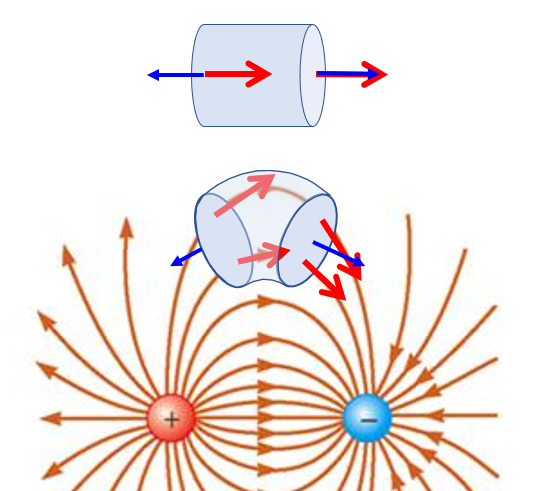
This leads to the flow that 'goes out' being compensated for the flow that 'goes in'. This is only if there are no charges inside, that is, there is no source or sink that generates or destroys field lines. In this sense, one can speak of the conservation of the flow as in a liquid.
ID:(1777, 0)
Flux of a charge
Image
If the surface surrounds a load it is observed that there is no compensation and that the flow only depends on the sign of the load:
• if the charge is positive, the normal versers are parallel to the field and the flow is positive
• if the charge is negative the normal versors are anti parallel to the field and the flow is negative
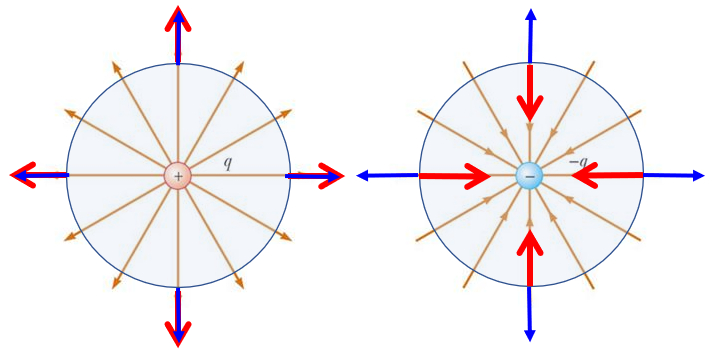
ID:(1776, 0)
Flow of two opposite charges
Image
If two opposite charges are considered and the flow through a surface containing both is studied, we observe that the flows are compensated again, being in the end the total flow null. In this way we conclude that:
• there is no full flow in a volume that does not contain charges
• there is no total flow in a volume that contains an equal number of positive and negative charges
• there is only total flow to the extent that there are loads whose total sum is not zero
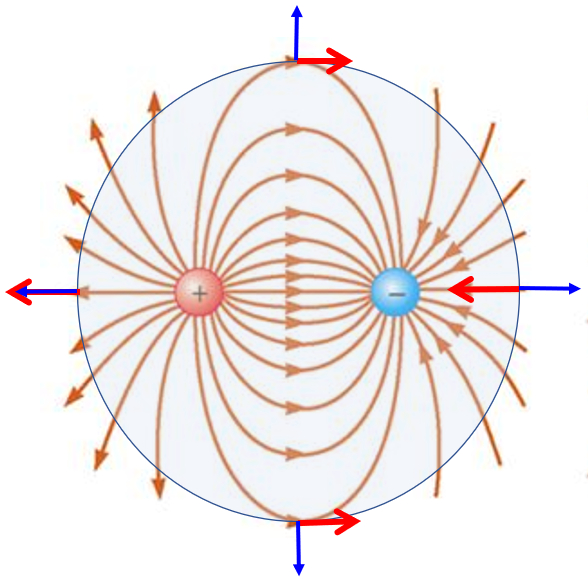
ID:(11375, 0)
Gauss Law
Image
Gauss's law considers the field lines with respect to a closed surface.
• If the surface does not involve any load, the field lines are preserved, that is, they flow both in and out of the surface.
• If the surface surrounds a
• If the charges contained in their sum are null, the sum of the components of the perpendicular fields on the surface will also be null.
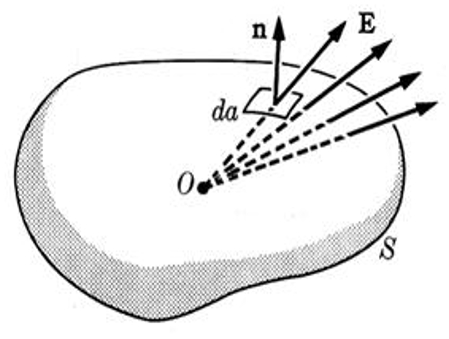
ID:(224, 0)
Sum of all charges
Equation
El flujo depende de la carga total contenida en el volumen que las contiene. Por ello debemos sumar sobre todas las cargas contenidas independiente de su posición.
Con
| $ Q = \displaystyle\sum_ i ^ N q_i$ |
ID:(11376, 0)
Discrete Gauss's law
Equation
El flujo total se puede calcular en el caso discreto con mediante
| $ \Phi = \displaystyle\sum_i \vec{E}_i\cdot\hat{n}_i\,dS_i $ |
Si tomamos el caso de una carga puntual, el campo eléctrico será con igual a
| $ E =\displaystyle\frac{1}{4 \pi \epsilon_0 \epsilon }\displaystyle\frac{ Q }{ r ^2}$ |
Como la superficie de una esfera es con
| $ S = 4 \pi r ^2$ |
\\n\\nse tiene que el flujo es\\n\\n
$\Phi = | \vec{E} | S = \displaystyle\frac{1}{4 \pi \epsilon \epsilon_0} \displaystyle\frac{ Q }{ r ^2} 4 \pi r ^2=\displaystyle\frac{ Q }{ \epsilon_0 \epsilon }$
con lo que se puede inferir que la relación con es
| $ \displaystyle\sum_i \vec{E}_i \cdot \hat{n}_i dS_i = \displaystyle\frac{ Q }{ \epsilon_0 \epsilon }$ |
ID:(11377, 0)
Gauss' law in integral version
Equation
En base a la ley de Gauss discreta es con charge $C$, constante de campo eléctrico $C^2/m^2N$, constante dieléctrica $-$, electric eield $V/m$, superficie i-esima $m^2$ and versor normal to surface i $-$
| $ \displaystyle\sum_i \vec{E}_i \cdot \hat{n}_i dS_i = \displaystyle\frac{ Q }{ \epsilon_0 \epsilon }$ |
se puede expresar su versión continua pasando de la suma discreta a una integral sobre la superficie considerada con charge $C$, constante de campo eléctrico $C^2/m^2N$, constante dieléctrica $-$, electric eield $V/m$, superficie i-esima $m^2$ and versor normal to surface i $-$:
| $\displaystyle\int_S\vec{E}\cdot\hat{n}\,dS=\displaystyle\frac{Q}{\epsilon_0\epsilon}$ |
ID:(3213, 0)
Application to the case of a field inside a conductor
Image
Inside a conductor you can define a surface
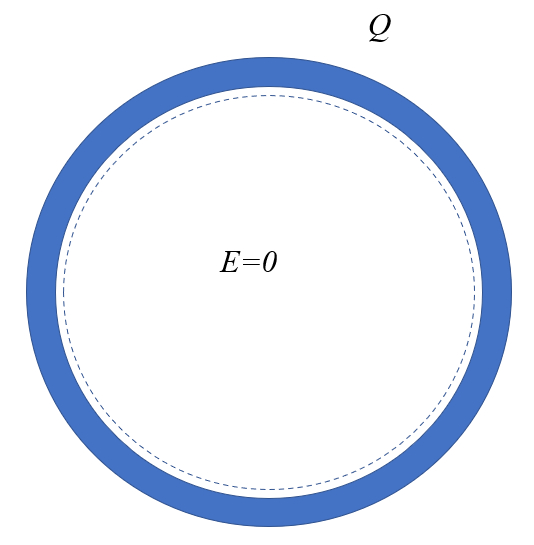
therefore the electric field is null. The driver generates what is called a Faraday cage.
ID:(1924, 0)
Field in the interior of a Conductor
Equation
Una carga hueca, es decir una esfera hueca con cargas en la superficie. En este caso se puede definir una superficie interna dentro de la esfera. Como aquí la carga
| $ E_r =0$ |
ID:(3842, 0)
Example of null field inside a conductor
Image
The fuselage of a passenger plane is generally a good conductor of electricity. Therefore, if an airplane is struck by lightning, the charges are distributed on its surface, but by Gauss's law, an electric field is not generated inside the aircraft. With this the passengers do not suffer damage and finally the cargo resumes its way generating a new ray that moves to some other place that is positively charged.

Therefore it is assumed that lightning is not dangerous for airplanes in flight and every airplane suffers several impacts a year. However if there is a risk in the process of landing; If the plane is struck by lightning when it lands, the loads can flow through the tires onto the runway, generating levels of heat that lead to damage to the tires. In general, pilots are trained for situations in which the landing gear is damaged, so the risk to passengers is not so high. However the damage to the aircraft may be greater and require more extensive repair before it can be operated again.
ID:(11374, 0)
0
Video
Video: Gauss Law
